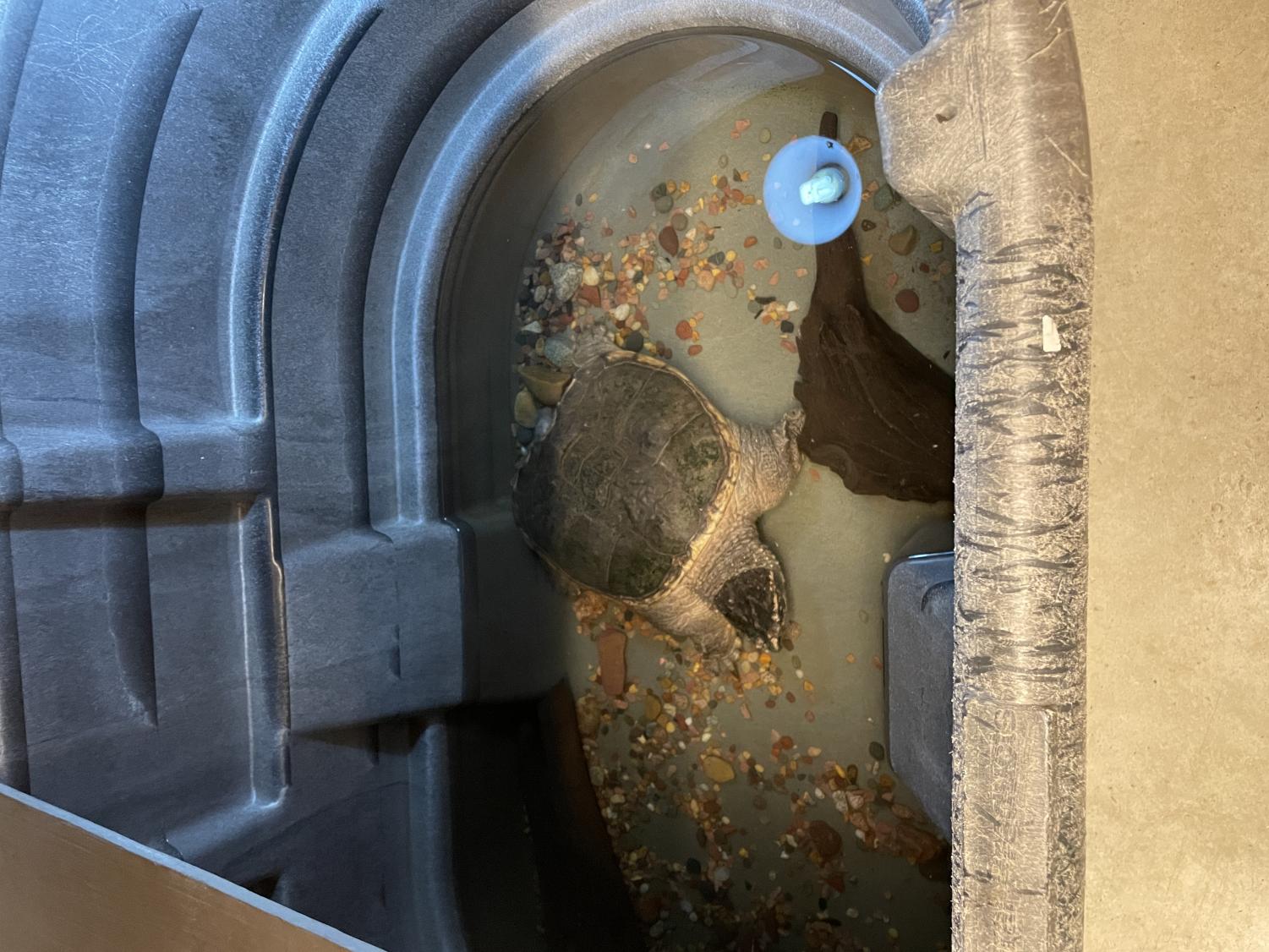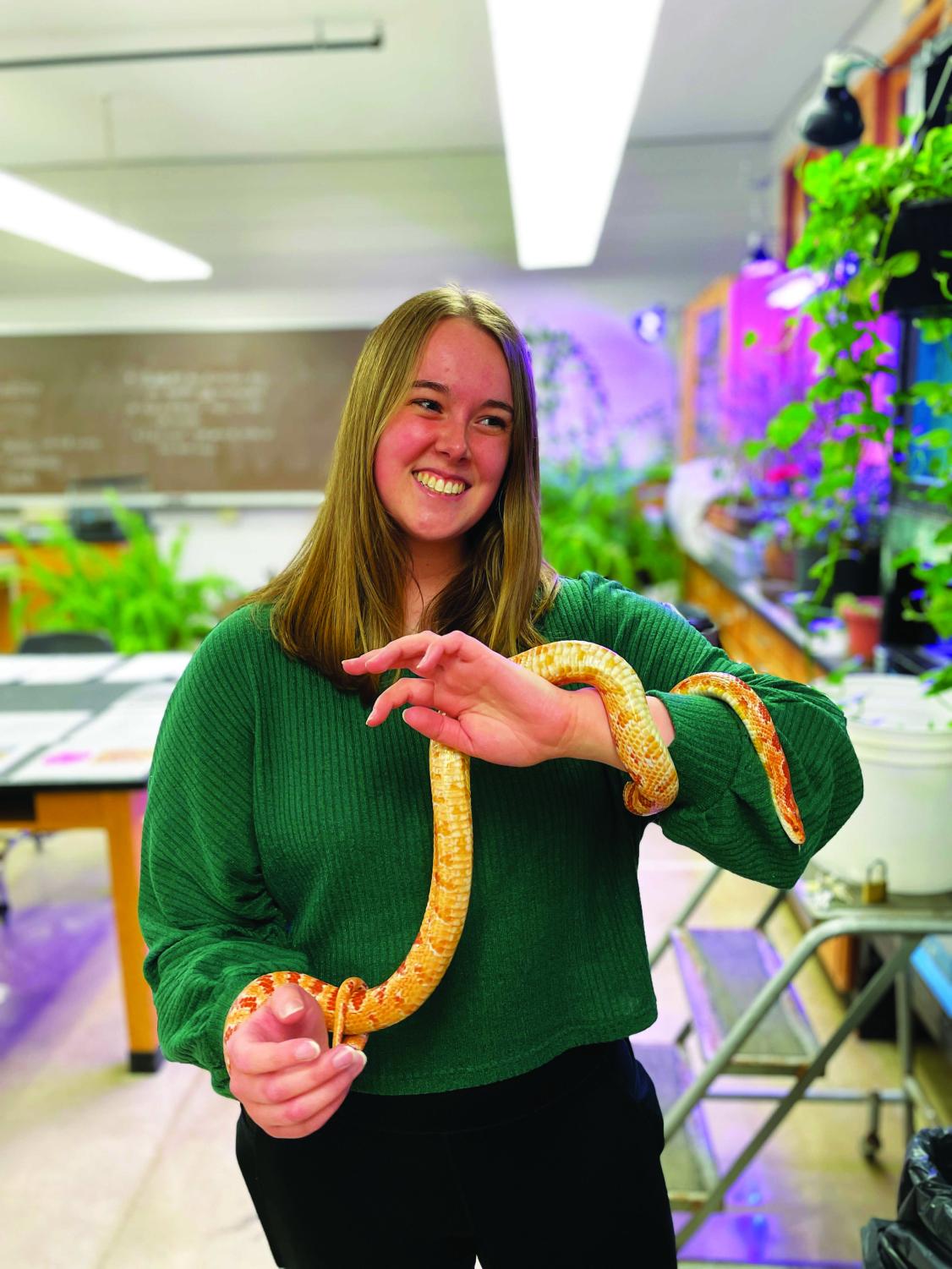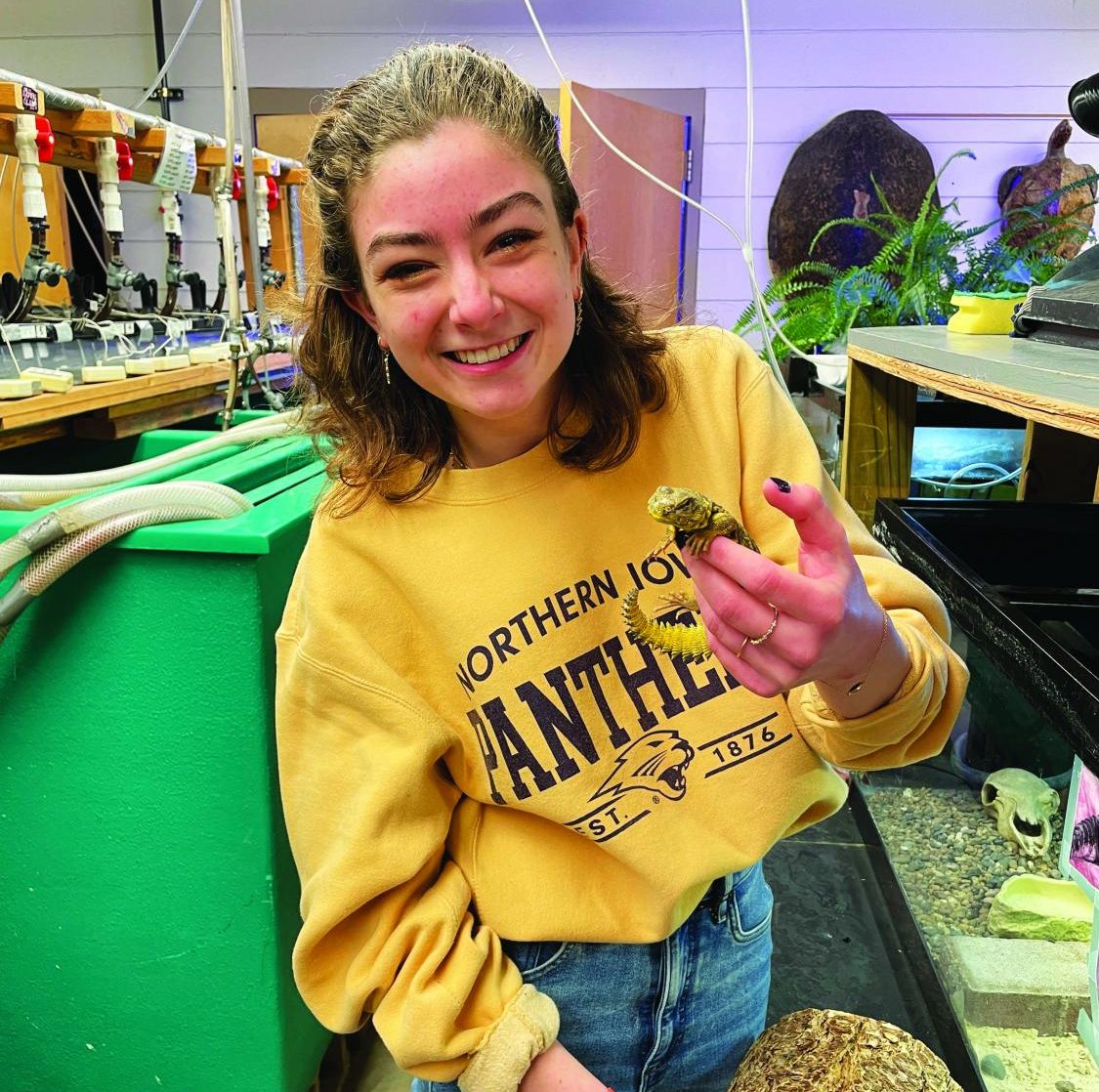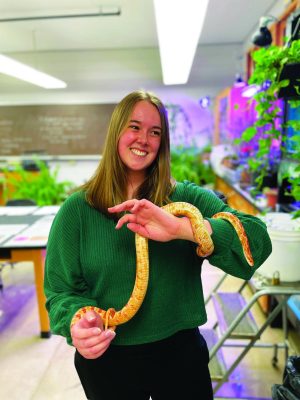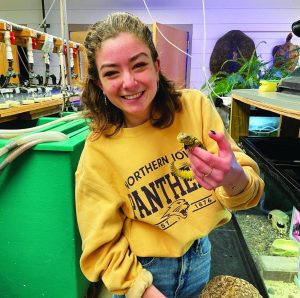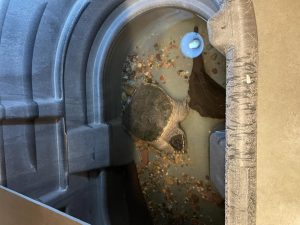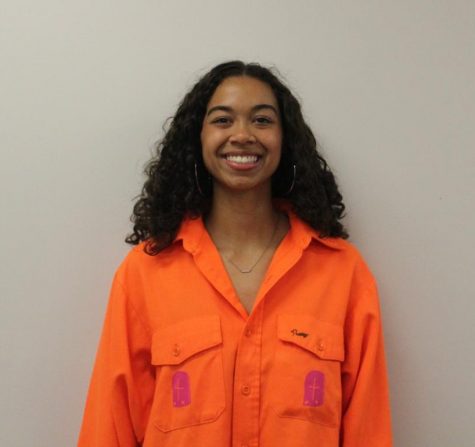Snakes and lizards and turtles, oh my!
Mar 7, 2022
Hiding in the McCollum science building are a couple rooms with cozy habitats for several reptiles and other animals. For around 20 years, UNI professor Jeff Tamplin, a herpetologist, has taken care of a group of reptiles – his focus being on wood turtles.
Native to Iowa, wood turtles have become an endangered species. These turtles, when unharmed, may live to be 80 years old, with mature females infrequently laying 6-8 eggs at a time throughout their life. The problem is that nearly any animal bigger than a baby turtle will have it for a snack. Raccoons specifically use their strong sense of smell to find the turtle nests, scented by the mother’s urine, to track down and feast on the eggs. Female turtles also risk death when having to cross roads in order to find a nesting site of their liking. “Iowa is the most physically-altered state in the country, in terms of changing the landscape and converting the land,” said Tamplin. This has contributed to the difficulties of survival for the wood turtles. Tamplin has worked on preventing the extinction of wood turtles by following the mother turtle’s tracks to the nest, and bringing them to the lab. “It’s a race between us and the raccoons,” said Tamplin.
Because of the raccoons’ scent-tracking, Tamplin and his crew are at a slight disadvantage, though this has not stopped them. The reptile lab, sometimes called the turtle lab, houses hundreds of turtles from incubation until they are grown and strong enough to be released into the wild. “I think humans are responsible for this current mass extinction event,” said Tamplin, who has been devoting his time and effort to fixing this devastating circumstance. “What can I do to combat the fact that most people don’t care?” is the question Tamplin asks himself.
Within the reptile lab, student assistants Anna Carmen and Jessica Haugen split the tasks of caring for the animals. Haugen, a junior biology major with a chemistry minor, has been working in the lab for two semesters with her focus being on the turtles.
Carmen, a sophomore biology major with a recreation, tourism, and nonprofit leadership minor has been with the reptile lab for two years. She has plans of pursuing zoology and nonprofit work, and handles the snakes and axolotl within the lab. Stevie, the larger of the sibling alligators, is cared for by Tamplin.
Haugen has learned more about Wally, the smaller alligator, and has been the one caring for him.
The rumor of students being able to walk Stevie was cleared up by Tamplin. About 10 years ago, when Stevie was young and small, Tamplin would put him in a dog harness and go outside for natural UV sunlight which is necessary for the health of reptiles. A guy that worked in the lab joined Tamplin for the gator walk once, and was later hired as a student ambassador. When giving tours, he began telling prospective students that they could walk the alligator. This rumor has continued well after the graduation of that student, and Tamplin has tried on occasion to debunk this claim.
In addition to the wood turtles and much-loved alligators, the lab consists of even more reptiles. These include a lizard named JT, an alligator snapping turtle named Al, a regular snapping turtle called Turt Russell, snakes including Big Noodle, Mini Dash, Darth and Creamsicle, a tortoise called Harold and an axolotl (which originally came in with three of her four legs missing, but has grown them all back). to health, which is an ability of the species.
Tamplin has been awarded a significant grant to continue and devote more time to the wood turtles. He will be spending a majority of the next two years off-campus working on this project in place of teaching. Because of recent interest from students, the biology department has brainstormed the potential of having visiting hours for the reptile lab. That idea is still in the works.


